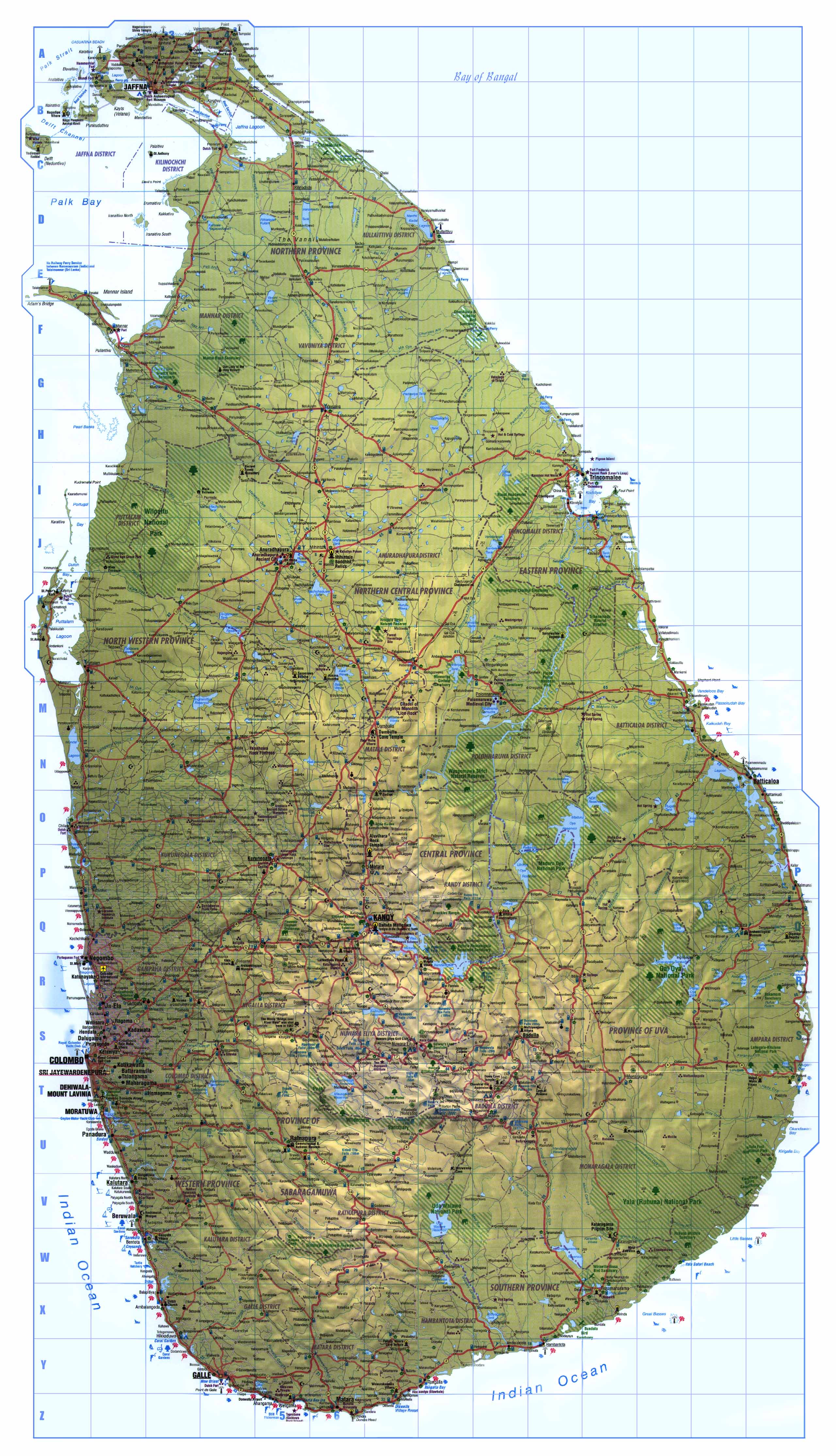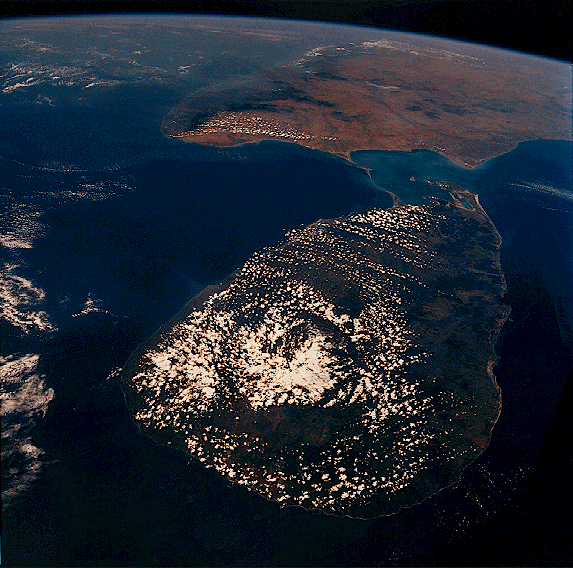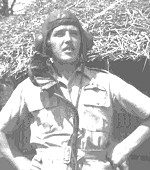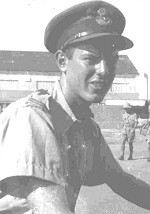|

The first Portuguese visiting Ceylon was Dom Lourenço de Almeida in 1505 or 1506.
Accidentally, after a storm, adverse winds drove him to the island’s coast near Galle.
In the last months of the years 1505 or 1506 Dom Lourenço’s fleet anchored off Colombo.
A memorial of this first landing was erected on a boulder overlooking the Bay of Colombo.
The Portuguese called it a "Padrao" and a cross above the Royal Arms of Portugal surmounted it. This landmark was still seen
in 1920 (now?) bearing the inexplicable date of 1501.
This first expedition admittedly built a wooden chapel and an agency in Colombo.
These structures were abandoned a few years later.
A treaty was concluded with the King of Ceylon, than residing in the city of Kotte, about two hours by foot from Colombo.
The Island was divided in four Kingdoms: Kotte, the most important, Sitawaka, Kandy, in the mountains, and Jaffna in the North.
In 1518, the Viceroy Lopo Soares de Albergaria landed at Colombo with a large fleet. Here the Portuguese began to build a
small fort named "Nossa Senhora das Virtudes" or "Santa Barbara". This first fort was a triangular in shape surmounted by
a central tower. Sinhalese soon besieged the fort, and around 1524 the Portuguese dismantle it. The Portuguese kept an Agent
in the Island under the protection of the Sinhalese King at Kotte.
Giving up of Colombo was a mistake. The colony of Muslims merchants immediately attempted to win back their supremacy in the
Kingdon of Kotte and to re-conquer the cinnamon trade. However, they were to be defeated by the few Portuguese still presents
in the Island.
The Mappillas (Malabar Muslims) that up to 1539 nourished a dynastic conflict in the Kingdoms of Sitavaka and Kotte, opposed
the Portuguese presence in Ceylon. Martin Afonso de Sousa, at Vedelai in 1538, and Miguel Ferreira, at Negombo in 1539 would
definitely defeat the Mappillas.
Also in these years, and with encouragement from the King of Kotte, the missionaries began the work of converting the peoples
of Ceylon to Christianity. Churches were erected in the fishing village of the southwestern coast. Sadly, in 1544, the King
of Jaffna massacred more than 600 Christians in the island of Mannar.
However in 1545 the King of Jaffna submitted and paid tribute to the Portuguese.
In October 1550, the Viceroy Afonso de Noronha arrived in Ceylon with 500 Portuguese soldiers that occupied Kotte, and sacked
Sitawaka.
But the Viceroy lost a good opportunity of establishing the supremacy of Portugal over the entire island.
In November 1554, Duarte de Eca with 500 soldiers built a new fortress in Colombo.
By 1556 the communities of fishermen occupying the sea coast south of Colombo (70.000 people) were converted to the Christianity.
The King of Kotte, Dharmapala (re-christened as Dom Joao Perya Bandara) and the Queen (re-christened as Dona Catherina) were
converted to Christianity. Following the King example, a few nobles, adopted the Portuguese title of Dom (Sir), the Portuguese
manners and language. These conversions were a serious mistake for the King and his entourage because they alienated the majority
of the Sinhalese population.
In 1560, Viceroy Dom Costantino de Bragança with 1.200 men conquered the town of Nallur, the capital city of the Kingdom of
Jaffna, and soon afterwards the Viceroy proceeded to the island of Mannar where a fort was built.
In July 1565, the Portuguese decided to transfer the Court and the capital to Colombo, thus Kotte was abandoned. The Portuguese
at Colombo were surrounded, the Sinhalese had three strong garrisons around Colombo at Wattala, at Nagalagama and Mapane.
Only in 1574 did the Portuguese take the offensive. They plundered Negombo, Kalutara and Beruwela, drove out the garrisons
at Nagalagama and Mapane and ravaged the districts of Weligama and Chilaw.
In August 1587, Raja Sinha, the King of Kandy and Sitawaka, began the siege of Colombo.
The Portuguese town was protected by fortifications with 12 bastions, that the Sinhalese assaulted many times but always failed.
In February 1588 they abandoned the siege.
Till the very end of XVII century the Portuguese were masters of the coast forts of Colombo, Galle, Kalutara and Negombo.
In 1591 Andre Furtado de Mendoça invaded Jaffna and set up a new king at Nallur.
The Portuguese occupied Kandy for a brief time in 1592, but, after a few weeks, they were forced to withdraw. They were also
masters of the Kingdoms of Kotte and Sitawaka, but several attempts to occupy Kandy were met with failure.
In 1597 the Portuguese had begun to fortify Galle.
On 27 May 1597, King Dom Joao Dharmapala died at Colombo without heirs and, in accordance with his will, his Kingdom was donated
to the King of Portugal. Thus, as King Philip of the then United Kingdoms of Spain and Portugal was proclaimed King of Ceylon,
the whole of the territory of the Kingdom of Kotte was thus under the control of the Portuguese, only Kandy was still not
under Portuguese rule.
In 1598, the Portuguese occupied Etgala Tota which commanded the passage of the river Maha Oya. In 1599, a strong fort was
erected at Menikkadawara (Manicavare) at the Kandian’s border.
On 31 May 1602, the first Dutch expedition arrived in Ceylon. They dropped anchor at Batticaloa, an harbor which the Portuguese
had never occupied, and established friendly relations with the King of Kandy against the Portuguese.
In January 1603, Dom Jeronimo de Azevedo occupied the fort of Ganetenna and the abandoned fort of Balane, the key to Kandy.
However, a few days later he was forced to withdraw and Menikkadawara was also lost.
On 1611, De Azevedo marched with 700 Portuguese and many Lascarins to Kandy, taking also possession of the fort of Balane
where he left a garrison. He was also successful in conquering the city of Kandy, which was taken and burnt. The King of Kandy
submitted himself to the Portuguese. Although not destroyed, the Kingdom of Kandy had been neutralized.
In 1624 the Portuguese occupied and fortified Trincomalee.
In 1628, Dom Constantino de Sa after strengthening Menikkadawara, crossed the island and occupied and fortified Batticaloa.
During the return march to Colombo he raided Kandy. In 1629, Uva (today Badulla) was also devastated.
In 1630, Dom Constantino de Sa, under pressure from the Viceroy, decided to undertake an expedition against the King Senarat’s
capital at Badulla.
On 9 August 1630, a small Portuguese army of 400 Portuguese soldiers, 200 Portuguese Casados (married men of the reserve army),
and about 4400 Lascarins, began the march from Sabaragamwa (near Ratnapura) to Uva across Ceylon’s jungles. On 18 August
1630 the Portuguese entered Badulla that was found deserted, and for two days sacked and burned the town down. On 21 August
1630, the Portuguese began the march to return to Colombo but were attacked by the Sinhalese army. Most of the Lascarins betrayed
– only 500 remained loyal – and joined the enemy. For the Sinhalese this was an overwhelming victory: of the Portuguese
expedition, only 130 men survived and surrendered.
This defeat placed Portuguese Ceylon in danger. If the Sinhalese had the means of blockading Colombo by sea, the complete
destruction of Portuguese power in Ceylon would have been assured.
After this victory, King Senarat captured the fort of Saparagamuwa and set Colombo under siege. But after three months of
siege the Sinhalese army was forced to withdraw.
The Portuguese Governors in Ceylon (Capitao General)
Pero Lopes de SOUSA 1594
Dom Jerònimo de AZEVEDO 1594 – 1611
Dom Francisco de MENESES 1611 – 1614
Manuel Homem MASCARENHAS 1614 – 1616
Dom Nuno Alvares PEREIRA 1616 – 1618
DomCostantino de SA’ e MENENES de NORONHA (first term) 1618 – 1620
Jorge de ALBUQUERQUE 1620 – 1623
Dom Costantino de SA e MENESES de NORONHA (second term) 1623 – 1630
Dom Felipe MASCARENHAS
(first term)
1630 – 1631
Dom Jorge de ALMEIDA (first term) 1631 – 1633
Diogo de MELO de CASTRO (first term) 1633 – 1635
Dom Jorge de ALMEIDA (second term) 1635 – 1636
Diogo de MELO de CASTRO (second term) 1636 – 1638
Dom Antonio MASCARENHAS 1638 – 1640
Dom Felipe MASCARENHAS
(second term)
1640 – 1645
Manuel Mascarenas HOMEM 1645 – 1653
Francisco de MELO de CASTRO 1653 – 1655
Antonio de Sousa COUTINHO 1655 – 1656

The Battle of Ceylon - 1942
by Wg Cdr John Barras
30 Squadron and the air battle over Colombo - 5th April 1942
The decision to send 30 Squadron to Ceylon was made in early February 1942. Declared non-operational on the 16th
February, they moved via Heliopolis to Port Tewfik on the Red Sea. The main party embarked on the Princes Kathleen on 22nd
February and the air party including a 196 man servicing party, embarked on HMS Indomitable, sailing for Ceylon on the 26th
February.
All available hands began assembling the crated Hurricanes on the ship's hangar deck on the 5th March, and on the following
morning 20 Hurricanes took off, bound for Ratmalana airfield, Colombo. Nineteen of the aircraft landed safely at Ratmalana,
but one, flown by Sergeant Whittaker, landed back on the carrier after experiencing engine trouble; a remarkable feat considering
that he had no tail hook and this was his first deck landing!
Stores and personnel arrived at Ratmalana on the 11th March, and the Squadron was declared operational on the 19th March.
Routine training continued until 28th March when an intelligence report was received confirming that the Japanese Fleet had
left the East Indies bound for Ceylon. On the 29th March, 30 Squadron had all 24 of its Hurricanes serviceable and airborne
in mass formation over Colombo; morale was high and crews were reported as expectant and ready for operations.
Just before dusk on the 4th April, a Catalina flown by 413 Squadron's CO, Squadron Leader Birchall, sighted a large Japanese
fleet 400 miles south of Ceylon. His radio operator managed to transmit the location of the fleet before their aircraft was
shot down by 6 Zero fighters from the carrier Hiryu. The Japanese now knew that their presence had been detected, so they
began preparations for an attack against Colombo the following morning. Shortly after first light, they launched a force of
125 aircraft under the command of Commander Mitsuo Fuchida of the Akagi, who had led the attack on Pearl Harbour. Fuchida's
force comprised 36 Val dive bombers, 53 Kate attack bombers, and an escort of 36 Zeros. Admiral Nagumo kept the rest of his
force, approximately another 180 aircraft, in reserve as a second wave, to be launched once Fuchida had confirmed the location
of the Eastern Fleet, his principle target.
Back at Ratmalana, most Squadron personnel were up by 0400, and the aircraft were at immediate readiness by first light
at about 0600. A routine patrol by 2 of 30 Squadron's Hurricanes reported 8/10ths of storm clouds over most of the island.
The RAF were unaware of the range of the Zero, or that they could carry drop tanks, so it was generally thought by Fighter
Operations in Colombo that an attack was most likely to be the following day, but the crews watched and waited. The clouds
began to clear a little, and at 0730 some men were released for breakfast. Ceylon had modest radar coverage, and the radar
posts were linked by commandeered telephone lines to Fighter Operations Headquarters in Colombo. Incredibly, the radar posts
were not manned when the Japanese force crossed the coastline south of Colombo. There are various stories about them being
shut down for maintenance, as was the norm on a Sunday, or that there was a rather relaxed shift change. Both accounts are
bizarre given the events of the previous evening and the readiness posture of the fighter squadrons, and the consequences
were catastrophic for 30 Squadron.
At 0750, the crews were horrified to see formations of enemy aircraft overhead. The alarm was given and the startled pilots
rushed to take off. The Japanese were aware of the existence of Ratmalana and a small force of dive-bombers was detailed to
attack it. So it was then, that as 30 Squadron's pilots got airborne in ones and twos, the airfield came under attack. The
Hurricanes were at an immediate disadvantage. At low level the Zero was more manoeuvrable than the Hurricane, and armed with
cannon, which were more effective than the Hurricane's machine guns. The only advantage they had was their robustness; the
Zero was quite flimsy and would not take much damage. The Hurricanes also had the disadvantage of having no tracer ammunition,
which had been removed after a number of rounds had exploded a few days before because of the heat.
The Hurricanes found themselves climbing into cloud shortly after take off and, unable to operate as a wing, fighting
very much as singletons. We therefore know little about what happened next but can gain an insight into the confusion and
exhilaration of the moment from the eyewitness accounts collected by David Dick, recorded on the next page.
The principle target of the Japanese force was of course the harbour. Fuchida was dismayed not to find the Royal Navy
in harbour, and soon he received a report from a float-plane which had located HMS Dorsetshire and HMS Cornwall heading south-south-west.
Concerned that the Eastern Fleet might be about to launch an attack against his own carriers, Fuchida ordered the recall of
his bombers. A number of the Zeros stayed to continue the fight against Hurricanes of 258 Squadron which, being based at Colombo
Racecourse, had received precious early warning of the attack and had managed to get airborne without loss. Attempting to
return to their carriers without the usual assistance of the bombers and their navigators, several Zeros never made it back
to the Japanese ships, which had since altered course to the west. The Japanese launched 80 dive bombers against the 2 Royal
Navy cruisers, sinking them in little more than 15 minutes. Admiral Nagumo, unaware of the British naval base at Addu Atoll,
took his fleet south-east and then towards Trincomalee, which he attacked on the 9th April.
Having failed to find the Eastern Fleet but had moderate success in sinking 2 cruisers, 1 carrier, and several merchant
vessels, Nagumo's forces returned to the Singapore Straits. In the aftermath of the 5th April battle, the general breakdown
in communications made it difficult ascertain what had happened. Squadron Leader Chatter flew over to the Racecourse to see
if any of 30 Squadron's aircraft were there; 8 had failed to return. Slowly the situation was pieced together. Flight Sergeant
Paxton was in hospital with serious burns; he died 2 days later. Sergeant C J Browne was dead; his aircraft had been seen
to down a Japanese bomber before being engulfed in flames. Pilot Officers Caswell and Geffene had both been shot down and
killed. Flight Sergeant Tony Ovens' body was found in his aircraft crashed in a reservoir near the Kandy road. By the end
of the day only 7 of 30 Squadron's Hurricanes were fit to fly. Twenty-seven RAF and FAA aircraft had been lost in the battle,
with 17 airmen killed and 11 injured.


The Battle of Ceylon - 1942
by Wg Cdr John Barras
Eyewitness recollections of 5th April 1942 At Ratmalana By D A McDonald, then a Pilot Officer on 30 Squadron
Don Macdonald crashlanded on the Front at Colombo in front of the Galle Face Hotel. A staff officer from the Headquarters
(now the HQ of the Srilankan Airforce) rushed to his aid and took him into the Hotel.
"I expect you could use a drink" said the officer. A waiter duly arrived with a tumbler of amber liquid, which
Don gulped down only to discover with typical RAF horror that it was iced tea rather than whiskey. Well, it was only 8.30
am!
"We knew that the Jap fleet was out and bound for Ceylon a week before the raid. On Saturday 4th April we knew that
the Catalana squadron had sighted the Jap fleet. We stood at readiness from about 2am on in bright, brilliant moonlight. About
6am half of us went for breakfast and we had just arrived back in front of the control tower when we heard engines roaring
(overhead) and looked up to see formations of Japs (aircraft) coming over the tops of large cumulus clouds. We later found
that the radar shut down regularly on Sunday mornings for maintenance. Apparently no one alerted them to the emergency."
"Why the Japs did not keep us on the ground I will never know. We took off in sections of two and never did have
an opportunity to operate as a squadron unit. I took off flying number two to Flight Sergeant Paxton. We started into a cloud
to gain height. In one clear spot I saw a line of T99 dive bombers. I broke off and attacked the last one in line. All our
aircraft were loaded with straight ball type ammunition because a couple of weeks before, the 4E incendiary started to explode
in one of our aircraft due to the intense heat, (when) sitting uncovered in the sun. I was not able to see whether I was hitting
the Jap or not, but finally noticed some liquid pouring out from under his wing. I then looked around and saw two very nasty
looking aircraft above me, rolling to attack. I figured that they would likely out-turn me so I dove for the deck hoping to
outdistance them. I saw tracers going by each side of the cockpit and I was almost immediately covered with oil and glycol.
By this time I was quite low and heading across the harbour, which was full of ships. Some of them - possibly all of them
- took pot shots at me. I knew I would have to crash land and the Galle Face Green appeared to be my best bet."
"The next day we found that Flight Sergeant Paxton was in hospital, severely burned. The CO and Frank Bush went to
see him. First he confirmed that the Jap I shot at went down in flames. He took one of the Zero's off my tail, but was attacked
himself and set on fire. He was ready to jump when another Jap flew in front of him. He stayed in long enough to shoot at
him and then baled out. George Chater (the CO of 30 Squadron) asked him if there was anything he wanted and he said "A
bottle of Scotch". They arranged to get a bottle and took it back to the hospital. When they left Paxton was quite happy
with his bottle. Unfortunately he died shortly after. Frank Bush drew picture of Paxton's Hurricane on fire with him shooting
at a Jap; I have often wondered what happened to it, along with the other pictures Frank painted."
"Before we landed in Ceylon a B17 Flying Fortress overshot the runway at Ratmalana and could not be flown out. It
was sitting at the edge of the field without any engines. Apparently every Jap that attacked the field shot at the B17. After,
we wondered how many B17's were claimed as destroyed by the Japs that got back."
"Our communications system was very inadequate. The signal for the Squadron to scramble was for the control tower
personnel to fire a Very pistol. That morning whoever was to fire the pistol was so excited that he forgot he was in the tower
under the roof when he fired. Apparently it was pretty exciting for them dodging the flare. I believe that the only casualty
among the ground crew was a chap standing under a palm tree being hit by a coconut shaken loose by a bomb blast."
"Flying Officer Cartwright was being chased by a Jap Zero. He was on the deck turning around trees when one wing
hit a tree. Cartwright said that the aircraft cartwheeled three times and he ended up still strapped in his seat, but jammed
back in the tail. He had a slight scratch on one shin, Cartwright was later OC "A" Flight from August 1942 to some
time in 1944."
|

